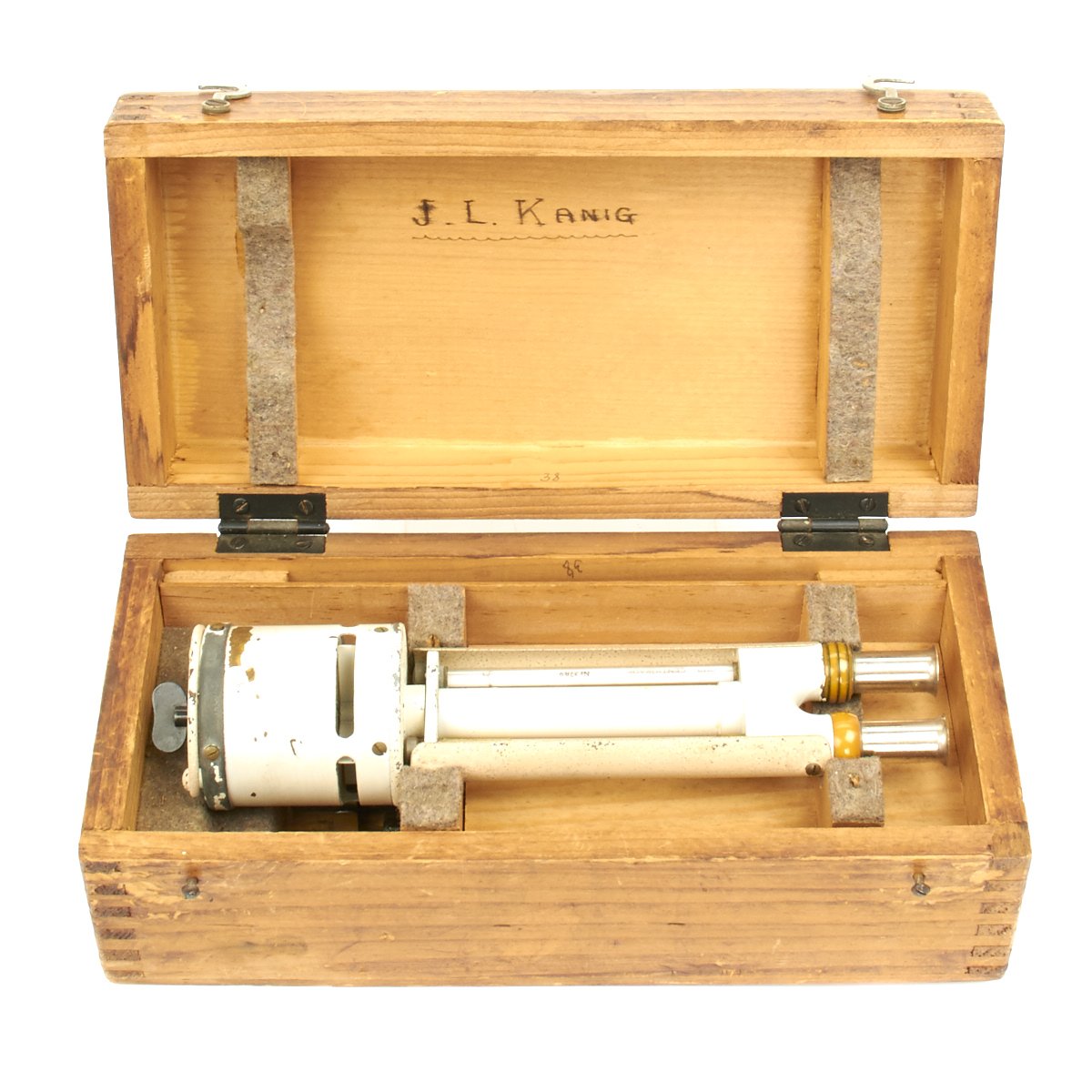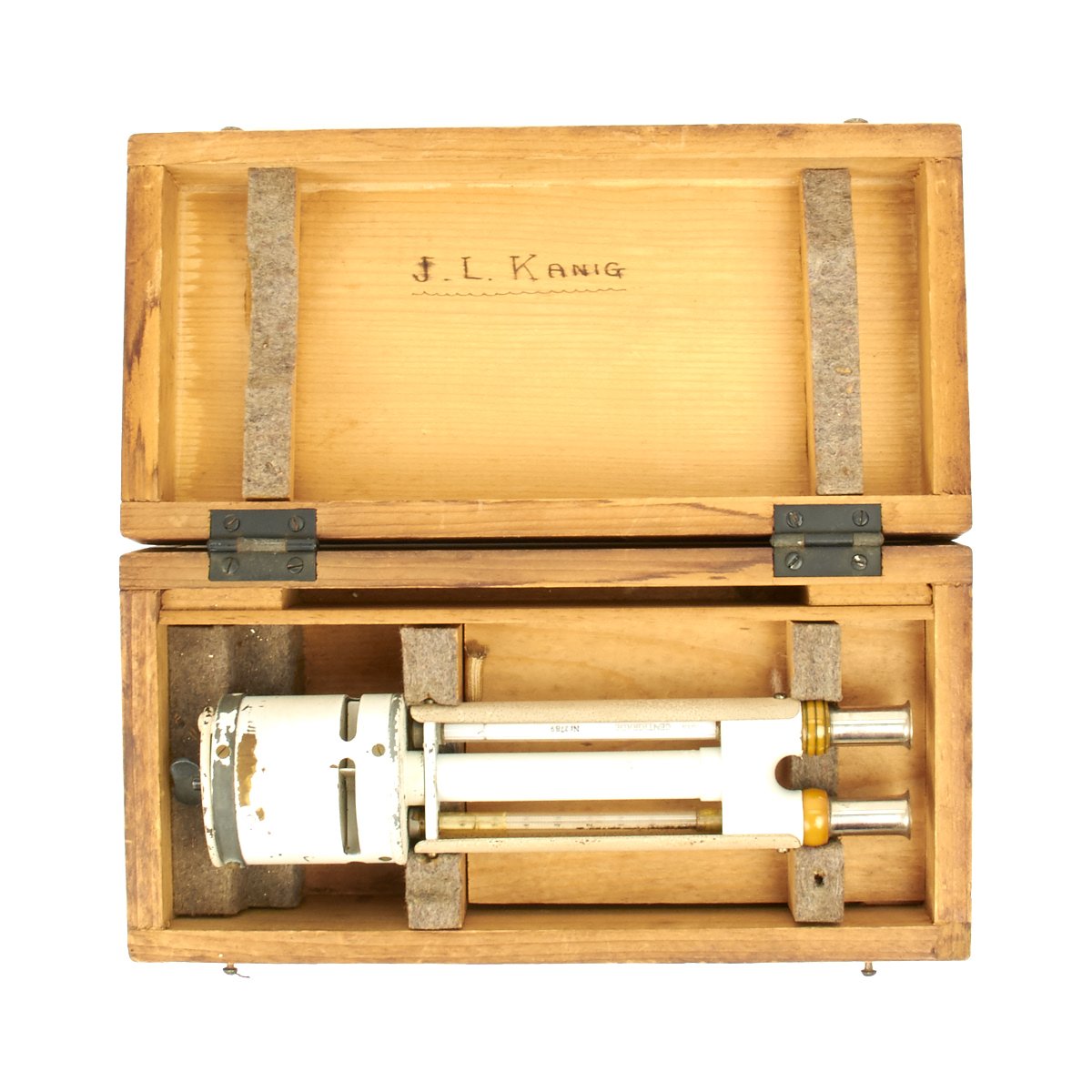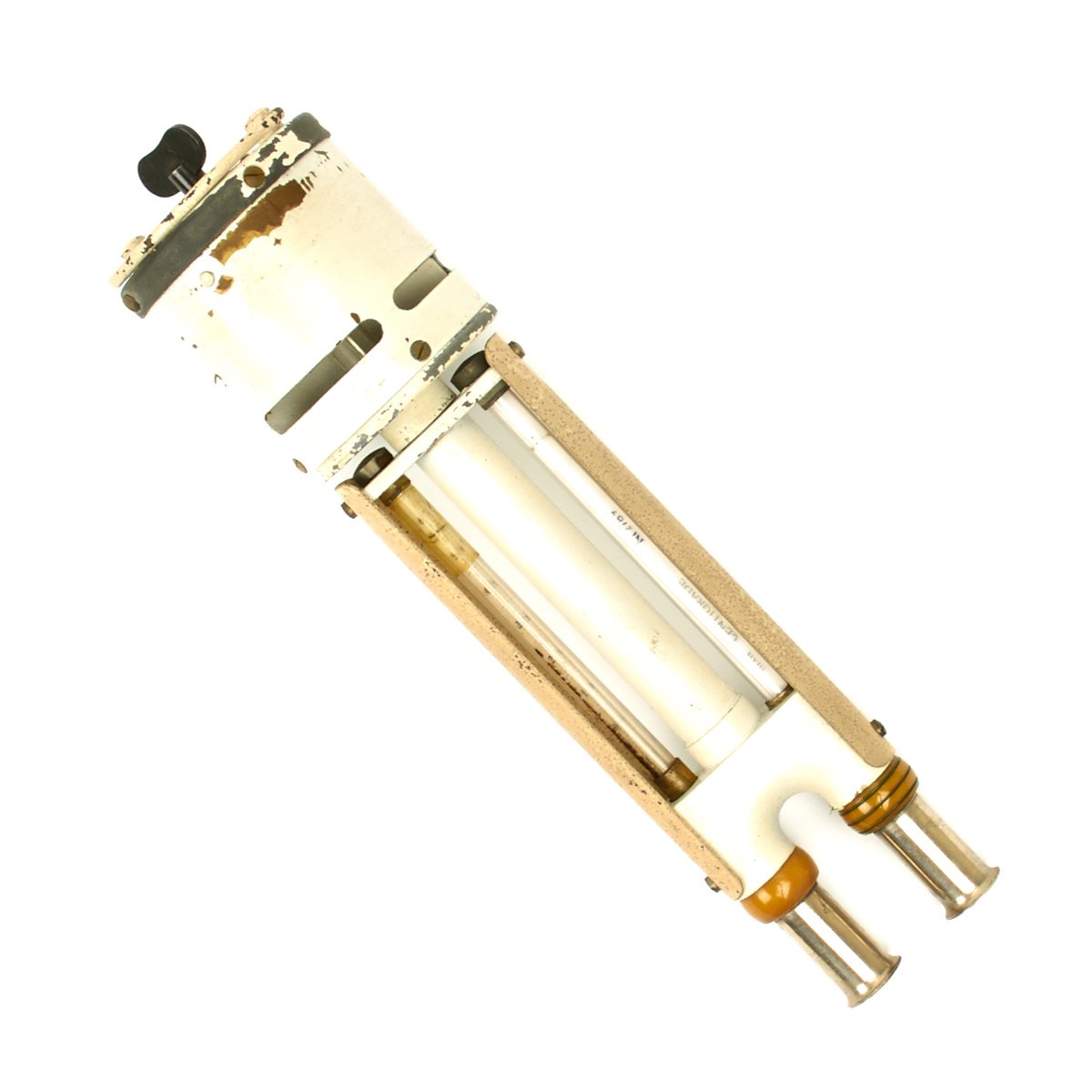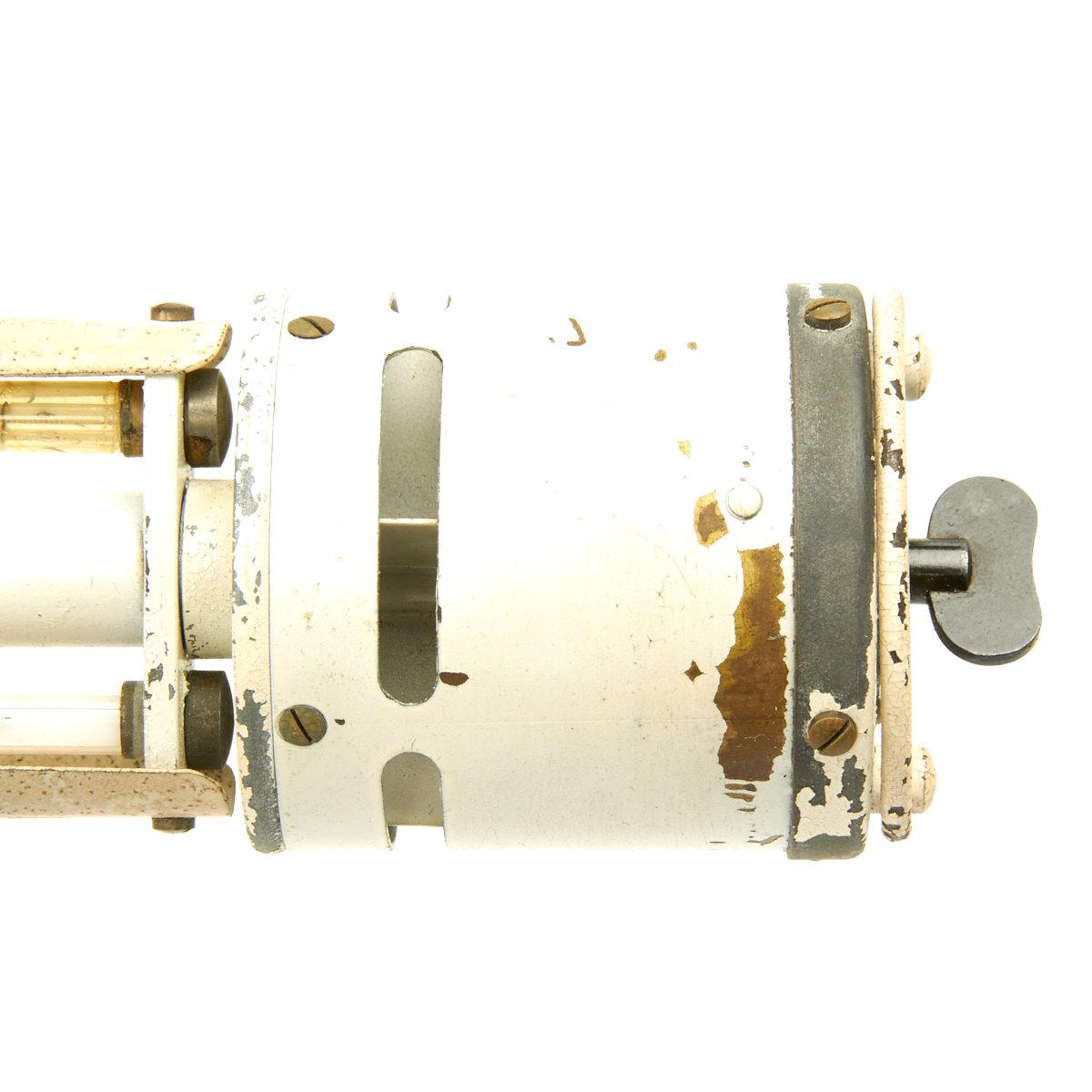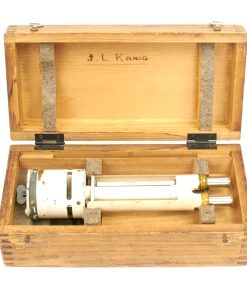German WWII Navy Kreigsmarine Lambrecht Psychrometer Original Items
$ 395,00 $ 118,50
Original Item: Only One Available. A psychrometer, or wet-and-dry-bulb thermometer, consists of two thermometers, one that is dry and one that is kept moist with distilled water on a sock or wick. At temperatures above the freezing point of water, evaporation of water from the wick lowers the temperature, so that the wet-bulb thermometer usually shows a lower temperature than that of the dry-bulb thermometer. When the air temperature is below freezing, however, the wet-bulb is covered with a thin coating of ice and may be warmer than the dry bulb.
Relative humidity is computed from the ambient temperature as shown by the dry-bulb thermometer and the difference in temperatures as shown by the wet-bulb and dry-bulb thermometers. Relative humidity can also be determined by locating the intersection of the wet and dry-bulb temperatures on a psychrometric chart. The two thermometers coincide when the air is fully saturated, and the greater the difference the drier the air. Psychrometers are commonly used in meteorology.
This German Psychrometer bears a data plate that read Wilh. Lambrecht on the side as well as a NSDAP eagle over M for Kreigsmarine. The measurement of humidity assisted in forecasting weather conditions which were of utmost importance for a Navy at war. This example appears to be in full working order, comes with spare unused thermometers as well as extra wicks. The wood box is named to J.L. KANG.
A very interesting bit of 1940s technology patented by an inventor Wilhelm Lambrecht who died in 1904.
Prompt Shipping and Professional Packaging
We provide a variety of shipping options due to our long-running partnerships with UPS, FedEx and DHL. Our warehouse personnel are well trained and will pack the goods according to our exact and precise specifications. Before shipping your items will be thoroughly inspected and secured. Every day, we deliver to thousands of customers in different countries. This is a sign of our determination to become the largest online retailer worldwide. Both Europe as well as the USA have warehouses and distribution centers.
Note that orders containing more than one item will be subject to a processing period that is based to the particular item.
Prior to shipping the items, our staff will carry out an exhaustive inspection of the products you ordered. Today, most orders will be delivered within 48 hours. The estimated delivery time is between 3-7 days.
Returns
The stock is constantly changing. It's not entirely managed by us since we are involved with multiple entities, including the factory and our storage. Therefore, the actual inventory could alter at any time. It is possible that you will not receive your order after the order has been made.
The period of time is 30 days. Unfortunately, if 30 days have passed since you purchased your product, we are unable to provide a refund or exchange.
The item must not be in use and must be in the original packaging. The item must be in the original packaging.
Related products
Uncategorized
Australian WWII Owen MK1 Machine Carbine SMG Custom Fabricated Replica with Sling Original Items
Uncategorized
Uncategorized
Uncategorized
Uncategorized
Armoured Fighting Vehicles of the World: AFVs of World War One (Hardcover Book) New Made Items
Uncategorized
Uncategorized
Uncategorized
Uncategorized
Uncategorized
Uncategorized
Uncategorized
Uncategorized
Uncategorized
Uncategorized
Uncategorized
Uncategorized
Uncategorized
